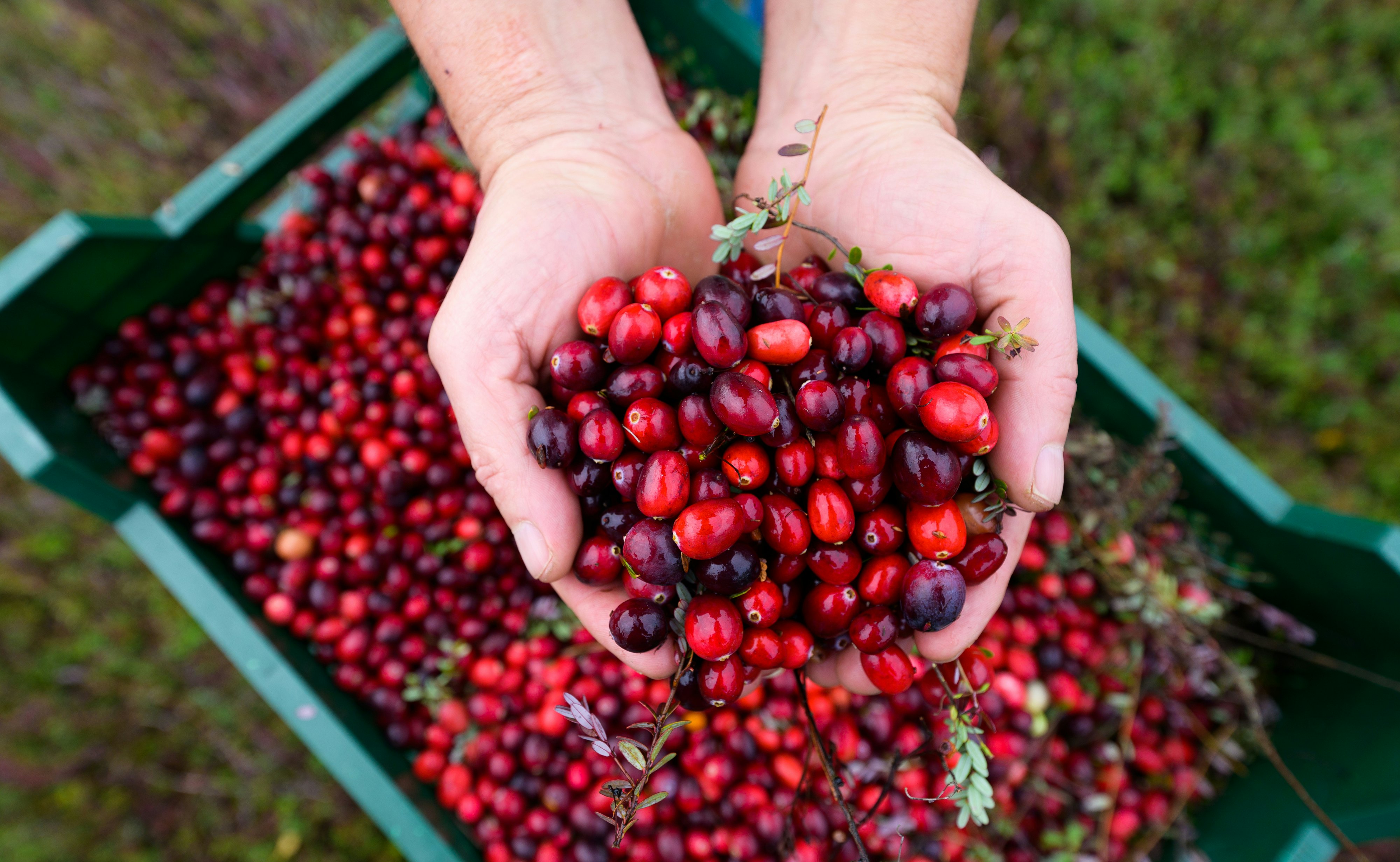
“Refreshing, cheering, encouraging… perhaps the prettiest berry… certainly the most novel and interesting,” renowned American naturalist Henry David Thoreau marveled at the humble cranberry in an 1852 journal entry.
To this day, the tart berry takes particular precedence next to the formidable turkey on the quintessential American Thanksgiving dinner table. But how did it get there? Cranberries don’t claim a spot on your holiday table for no one reason. Peel back their firm flesh and autopsy the berry’s insides, and you’ll discover a fascinating chemical composition that transforms them into jelly superstars, forming a perfect partnership with turkey. Add their potential health benefits to the mix, and it’s no wonder we heap generous portions of this sweet sauce onto our plates every Thanksgiving.
Before Thanksgiving
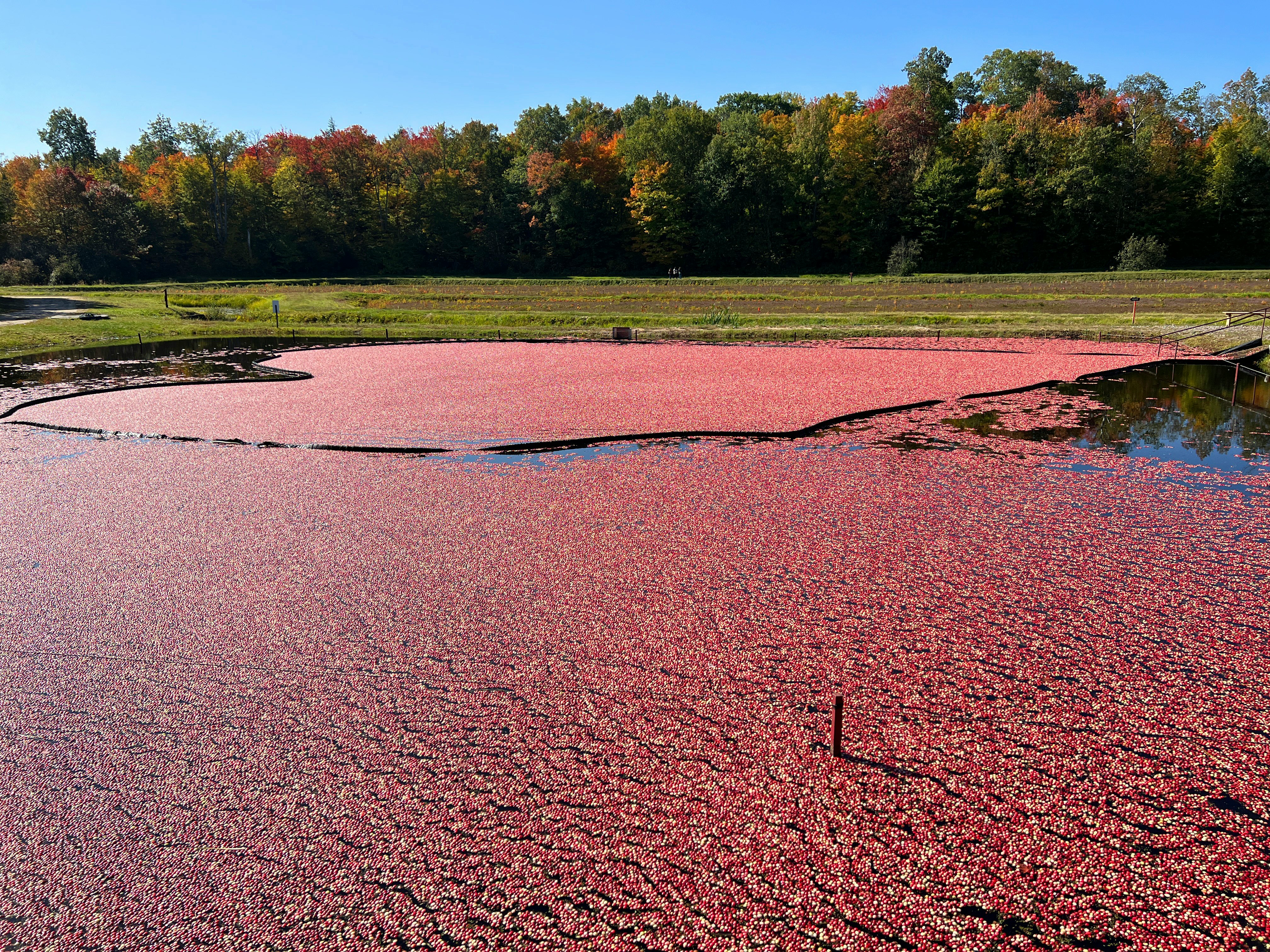
Cranberry plants thrive in the unique environments created by the swamps and bogs of northeastern North America. Bogs contain high amounts of peat, a type of partially decaying plant matter, as well as sand, gravel, and clay. These low-to-the-ground shrubs embed themselves in the bogs and produce tiny oval leaves, vine-like stems, and cranberry buds that bloom in May and June, creating a cranberry carpet. By late September and early October, they’re ready to grace our holiday tables.
But cranberries weren’t always reserved for the holidays. Before Thanksgiving existed, these berries played a vital role in Indigenous communities, including the Wampanoag, Pequot, Lenni Lenape, Delaware, and Algonquian peoples. These communities used cranberries in various ways including eating them fresh, drying them, baking them into cakes, and even using them for medicinal purposes. Today, the Wampanoag people still celebrate Cranberry Day on the second Tuesday of October, a time for picnics, games, and storytelling when the berries are harvested.
In the early 1600s, cranberries’ culinary versatility extended to early European settlers, who incorporated cranberry sauces with meats. In 1627, John Josselyn, an English traveler, wrote: “The Indians and English use them much, boyling them with Sugar for Sauce to eat with their Meate, and it is a delicate Sauce, especially for Roast Mutton.”
In 1796, cranberry sauce found its way into Amelia Simmons’ The First American Cookbook, recommended as an accompaniment for roast turkey or fowl. Fast-forward a few centuries, and Americans now devour approximately 5 million gallons of cranberry sauce during the holidays, whether from cans (as 76 percent of Americans prefer, according to Ocean Spray) or homemade.
Born to be jellied
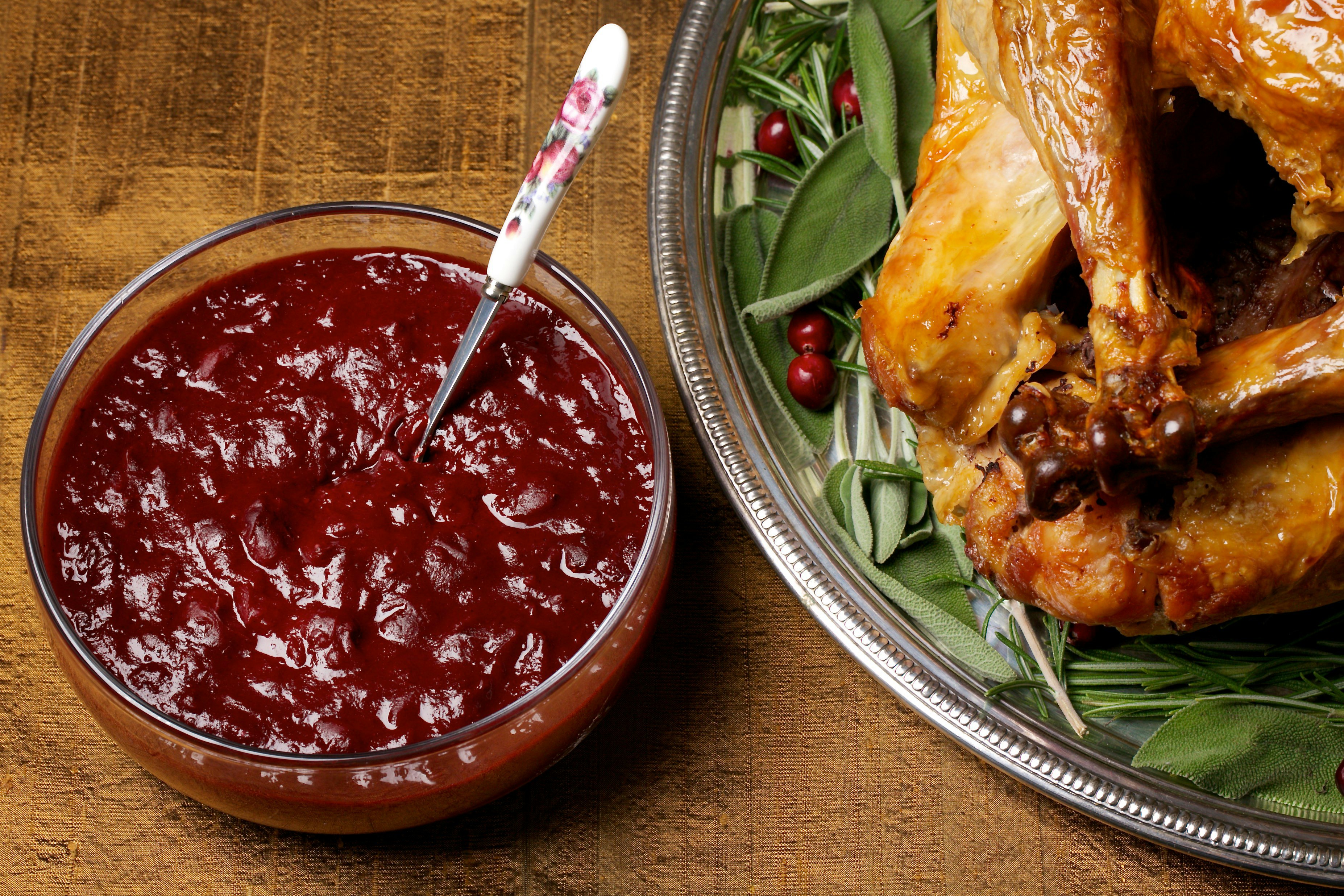
Cranberries contain a few unique ingredients that make them a staple at any Thanksgiving table — and one of the most important is pectin.
“Pectin is a heteropolysaccharide, commonly found in the cell walls of terrestrial plants,” H. N. Cheng, a retired research chemist who worked at the United States Department of Agriculture, tells Inverse. Heteropolysaccharide means it contains a number of different saccharides, which are a type of sugar.
“Pectin is a profitable commercial product, typically produced from citrus peels, and used as a high-value gelling agent, especially in jams and jellies, dessert fillings, medications, and sweets,” Cheng says. This is why pectin is vital in creating the signature jellied texture in cranberry sauce.
Pectin isn’t unique to cranberries. “It’s found widely in plants. It helps to strengthen the cell walls and binds the cells together,” Cheng says. “It’s an important component of many fruits and vegetables.” However, cranberries do contain a lot of pectin. “It helps keep the berries nice and firm. Like the other fruits, pectin plays important roles in the growth and ripening of cranberries.”
When cranberries are cooked, pectin polymers create a net that traps sugar molecules, resulting in the distinctive firm, jelly-like texture we associate with cranberry sauce.
Cranberry sauce straight out of the Ocean Spray can, that cylinder of wobbling, scarlet jelly, may look anything but natural. However, the pectin in cranberries means it doesn’t take all that much work to get them to look that way — at least not compared to other fruits and berries.
Studies show that cranberry pectin is particularly good at producing a robust, gel-like substance in this way, especially compared to other commercially produced jellies and jams with added pectin. This is why it’s one of several fruits and veggies that the National Center for Home Food Preservation says has “enough natural pectin and acid for gel formation with only added sugar.”
Tangy tannins
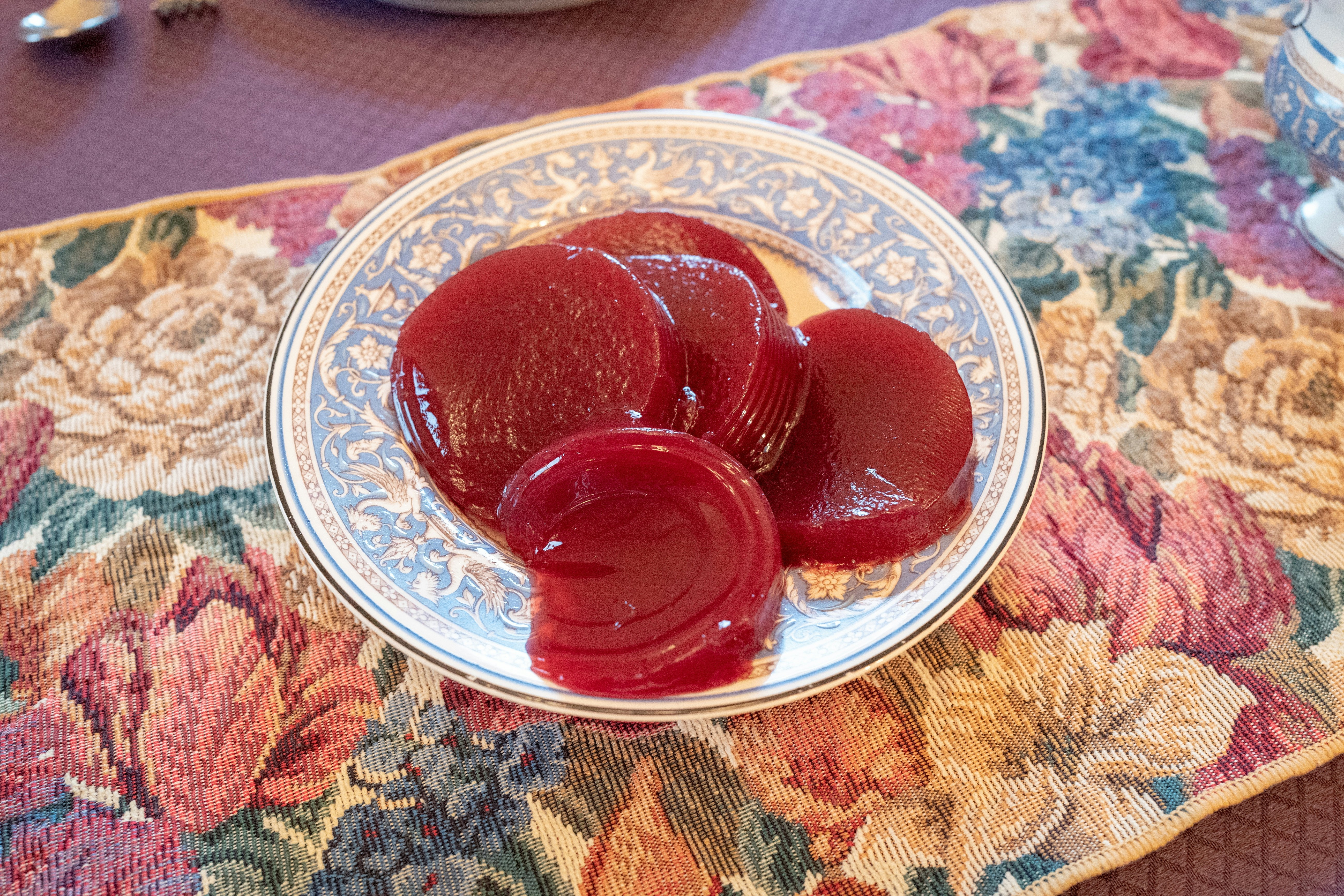
There’s another secret in the chemical makeup of cranberries that has little impact on texture but a big influence on taste. If you’ve ever tried a cranberry raw, you might have been struck by its sharp, bitter taste.
According to the cookbook Cranberry Cooking for All Seasons, an early missionary in the region of Concord, Massachusetts, said after a sermon in 1647: “Why are Strawberries sweet and Cranberries sowre? There is no reason but the wonderful worke of God that made them so.”
Well, it turns out there is. Tannins are partially responsible.
Most of the tannins found in cranberries come from the fruit’s skin. “Tannins are naturally occurring chemical compounds, known as polyphenols, found in many plants,” Cheng says. Tannins tend to contribute to bitter and astringent tastes, which you might most commonly find in cranberries, coffee, wine, and dark chocolate. But everyone has their own tolerance level when it comes to how much is too much bitterness.
“In foods, tannins can differ in texture and mouthfeel — from soft and silky to aggressive and grainy,” he says. “The astringency from the tannins is what causes the dry and puckery feeling in the mouth following the consumption of unripened fruit.”
This unpleasant taste is likely a defense mechanism of plants. “The plant produces tannins primarily for protection against insects, pests, and bacteria,” Cheng says. A plant is essentially saying, Please leave me alone. My leaves taste bad.
And although tannins can be unpleasant, they might be the secret ingredient that make cranberry and turkey pair so well together.
“Turkey is often dry, salty, and bland, which makes it the perfect partner for something sweet and moist,” Cheng tells us. “When they make cranberry sauce, sugar is added to gel the pectin. The sweet cranberry sauce and its tartness complement the more bland-tasting turkey.”
Antimicrobial berries
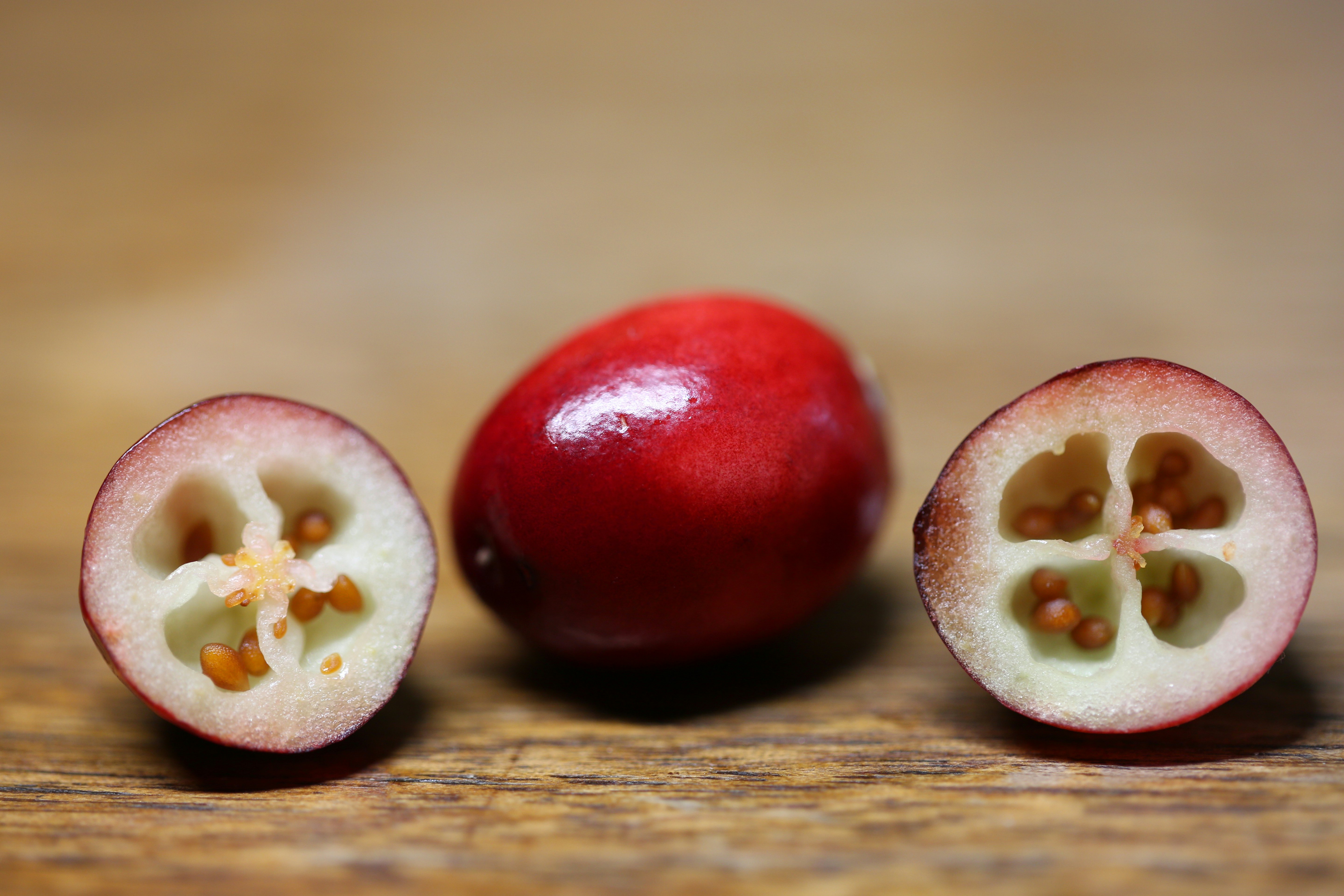
In addition to influencing taste, tannins may have made cranberries something of a medicinal powerhouse for centuries. According to many accounts, Indigenous communities used cranberries to treat urinary tract infections and wounds.
Studies suggest these benefits are largely due to a group of tannins called proanthocyanidins. Cranberries are one of the few fruits that contain them.
Recent research also suggests these proanthocyanidins could be used to help with E. coli infections, as they change the shape of bacteria, preventing it from attaching to cells and causing infection.
Our relationship with cranberries has endured for centuries, and that’s largely because of the unique scientific wonder this tart berry offers. It’s hard to imagine a Thanksgiving meal without a slice of that canned, pectin-filled, and tannin-powered tart goodness.







